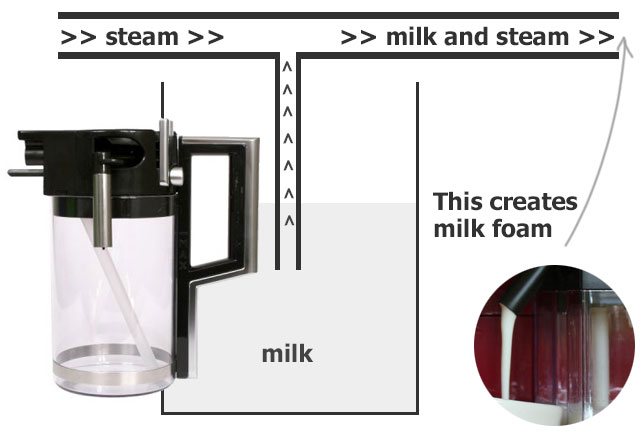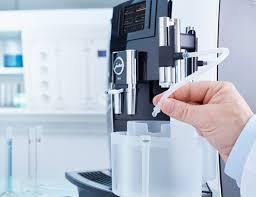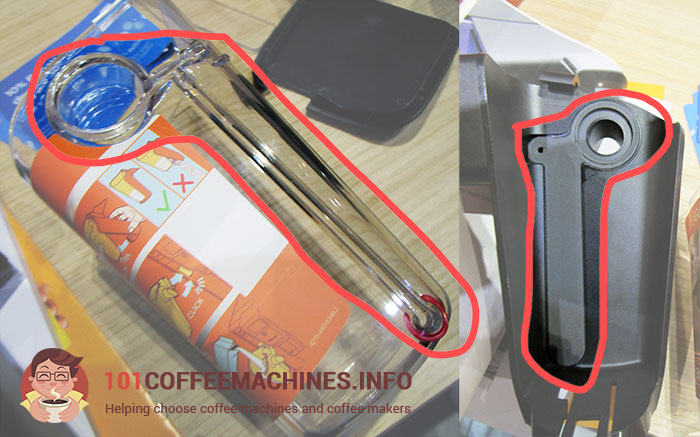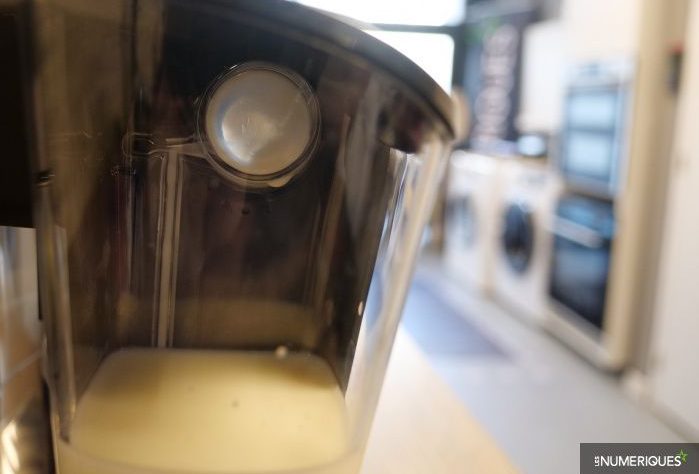A Brief Review Of New Philips’ Milk Frothing System “Latte Go” (introduced on Series 5000 EP5330/5331/5335 espresso machines)
My independent advices are based on 6 years of experience in coffee machines sales. 4 comments
Espresso machines could have manual milk frother (steam wand, panarello) or automatic milk frother, which can automatically make milk foam. Thus, such machines can make cappuccinos in one touch and the process is 100% automated.
Till 2018 there had been two types of automated frothers: 1) integrated milk jars that used by Delonghi, Saeco, Philips (the milk carafe have to be filled with milk and installed into the machine); 2) milk systems with a tube, which could be put directly into a milk bottle (usually used by Jura, Bosch, Siemens, some Saeco and Philips models also). More differences are described in my Delonghi vs Saeco article.
In 2018 Philips introduced the new type of milk frothing system for super-automatic espresso machines. They call it LatteGo. And here is what you should know about it:
1. Is LatteGo really a new method of frothing?
Generally, no. Both integrated milk jars and tube systems are similar to spray bottle or aerosol cans. The hot steam coming from by the main tube creates a pressure drop and “sucks in” the milk from the second, small tube. When they meet they mix and that’s how milk foam is created. Here is the simplified scheme:

In integrated milk jars both tubes are inside the jar, while tube systems have an external milk tube (example).
But all milk frothing systems had tubes. What Philips invented is a tubeless system. They use the same spray bottle technique but without tubes.
2. Why it is good when there are no tubes?

Philips Latte Go frother consists of literally two parts (with no tubes as I mentioned). So it’s very easy and fast to clean it on a regular basis. Or – even if you forget the machine with a milk – you can manually wash all the parts and remove all the milk stains.
3. How exactly Philips was able to make a system without tubes?
As I mentioned, Latte Go consist of two parts. Each part has a ditch:

When you connect two parts, two ditches creates a tube. They (when the LatteGo jar is assembled) work as a tube, exactly like on integrated milk jar (photo below by lesnumeriques.com):

When you detach two parts – there is no tube or hidden parts and it’s easy to wash it. Even if the milk carafe is very dirty and contain dry milk stains you can clean it with a cotton bud for example:

4. Which machines are equipped with LatteGo?
Philips espresso machines of 5000 series (a successor of Saeco Incanto model range). Philips started with German market, where it launched the Philips 5000 EP5345, EP5335, EP5333, EP5331 and EP5330 models. New machines are already (late October 2018) available in Netherlands (EP5330/5331), France (EP5331), Poland (EP5333), Russia (EP5034).
The difference between LatteGo and LatteGo Plus (installed on the German EP5345/10), by the way, is simply a metallic decoration. There are no functional differences.
Update! Philips 5000 LatteGo became avaialble in Spain and Italy also:
5. Are there any other benefits?
Yes, Philips claims that frothed milk swirls (due to the shape of the output – see video below) and loses big bubbles. Thus, the milk foam created by LatteGo is softer than by its counterparts. It appears to be true. However, I did not perform the tet-a-tet test of both systems using the same milk, so I can’t state this for sure. Anyway, even if the difference exists it is not very big – both old and new milk systems make similar foam.
6. What are the cons of the LatteGo system?
First of all, it doesn’t have milk foam height adjustments like Delonghi’s integrated milk jars do.
Secondly, its capacity – only 220 ml, which makes espresso machine with LatteGo system inconvenient to use if you make several cappuccinos per day. Or more.
LatteGo is perfect for those of you who make milk drinks irregular and usually makes one drink per time. Fill the small jar, make a cup or two, wash it quickly and that’s all. “Old” milk frothing systems require more cleanings even for one cappuccino.
However, if the cappuccino is an everyday drink in your family then it’s more convenient to choose espresso machines with an integrated milk jar. Because you can fill it with 1 liter of a milk, keep it in the fridge and connect to the machine every time you need to make a cappuccino.
I NEED you opinion. Please rate my review:


 (15 votes, average: 4.00 out of 5)
(15 votes, average: 4.00 out of 5)

Hi Dmitriy, I wonder if the LatteGo carafe is plug compatible with steamer sockets for the previous carafe style. That would be a big win for Philips if they offered the option for a smaller but easier to clean carafe that splits the tube when opened, and the larger carafe whose higher capacity seems to need a longer, sealed tube. Have you tried plugging a LatteGo carafe into the Incanto steam socket? That would be the best of both worlds if it worked. Thanks
Charles
9 Oct 19 at 1:07 am
No, they all (manual panarello, carafe, the tube system, LatteGO) are NOT interchangeable.
Dmitriy
9 Oct 19 at 2:25 pm
Regarding the difference between the latte go and latte go plus, according to the Dutch customer service of PHilips the regular latte go container is made of plastic, the latte go plus is made of glass.
Johan Berghmans
1 Feb 20 at 9:52 am
Still nowhere can I find the answer to how hot the milk is steamed to.
Thank you for answering the question i also has about the compatibility with steam wands. Too bad they stopped short here
Jd
18 Mar 20 at 3:58 pm
Have some doubts which model to choose? Ask me!